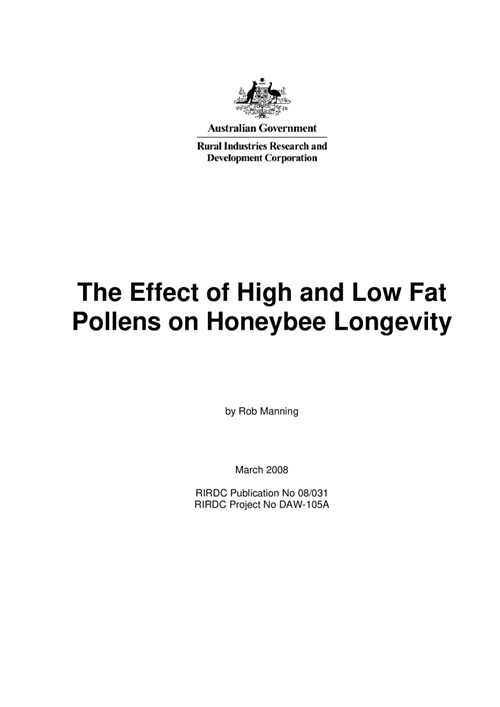Determining the impact of Varroa on virus transmission in Australian bees
This research aimed to contribute to ongoing surveillance of the Australian honey bee virus landscape as varroa establishes and spreads.
 HONEY BEE & POLLINATION
HONEY BEE & POLLINATION 
100 pages
Published: 4 Mar 2008
Author(s): Manning, Rob
Download report PDF
DownloadPurchase a hard copy - AUD $55.00
A survey was conducted nationally of bee-collected pollens which were analysed for fatty acids. During the survey (see also DAW-100A), 73 different fatty acids were identified from all pollen samples. Only five of these fatty acids: palmitic, stearic, oleic, linoleic and linolenic were common to all 577 pollens sampled.
European honeybees have evolved with plant species that have pollen that contain higher concentrations of lipid, particularly linolenic acid where concentrations are higher than Australian native plant pollen which were found in this research to be typically higher in the other essential fatty acid linoleic acid (e.g. Eucalyptus).
A second part of the research focussed on two of the five commonly found fatty acids, namely oleic and linoleic by supplementing them in varying concentrations into a low fat pollen collected from Corymbia calophylla (Marri; Redgum). This feedstuff was fed to honey bees to determine if there were any effects on longevity or physiological aspects such as nutrient levels and hypopharyngeal gland development within the honey bee.